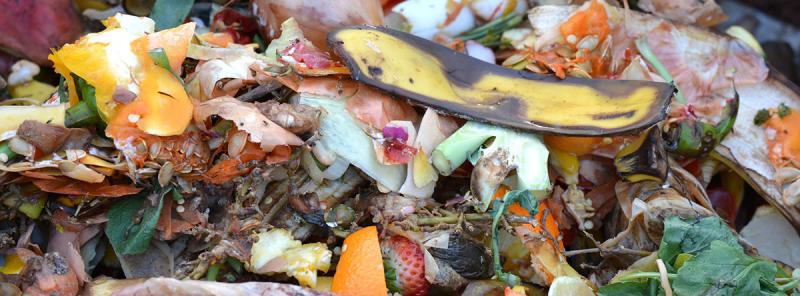
Most gardeners know food scraps contain nutrients that can be used to improve garden soils. The most common way of handling kitchen scraps is adding them to a traditional compost pile, but a less well-known composting method also works very well – pit or trench composting.
This method is also called vertical composting and soil incorporation composting, but no matter the name, it's one of the simplest methods of handling smaller quantities of food waste.
Traditional compost piles require a good level of oxygen for aerobic microorganisms to do their work. Trench composting is an anaerobic process, utilizing a different set of microorganisms that are active even with less than 5% oxygen. The activity of worms and other larger soil organisms also help break down organic material. Trench composting is an excellent way to increase worm populations in your garden.
One of the great benefits of trench composting – no turning a compost pile! But you do need to dig a new trench when the old one is full.
Creating Your Trench Compost Site
To get started trench composting all you need to do is dig a hole. If space is limited, start with a hole about 12-15 inches deep and 8-10 inches wide. You can also dig a longer trench, 12-15 inches deep and as long as your space allows.
But where will you put it? The vegetable garden is certainly a good place to start. You could locate your holes or trenches randomly throughout the vegetable garden as you need a new one or you could develop a system. Locate holes in even-numbered walkways in even years and odd-numbered walkways in odd years.
English gardeners practice a simple three-year rotation, utilizing soil incorporation of kitchen wastes, growing crops, and path making. In the first season a trench is dug, filled with food wastes and covered. At the same time, another row is used to grow crops and a third is used as a path. In the second year the fertile soil of the former compost trench is used to grow crops, the former crop row is used as a path, and the path is dug as a new trench. After a third year of rotation, the cycle starts over again. This form of composting keeps the garden perpetually fertile with a small organizational effort.
You can also locate smaller composting holes around the dripline of trees or shrubs. Minimizing hole size keeps tree root damage to a minimum. Or use open spots in ornamental planting beds as you divide and relocate perennials, or in fallow areas in the annual flower garden.
To fill the compost holes, cut or chop compost materials into fairly small pieces, place them in the hole and mix them with soil. Fill the trench until it is full enough to allow backfilling with at least 8 inches of soil. If your compost materials are dry, add moisture before backfilling.
And you’re done. No additional maintenance of the compost trenches is needed. Just dig a new trench for your next batch of kitchen waste. Depending on soil temperature, the number of microorganisms in the soil, and the carbon content of the wastes, decomposition will occur in one month to one year.
Materials for Trench Composting
Waste fruit and vegetables, peelings, coffee grounds, eggshells, bakery products, and many other leftovers can be safely composted using proper methods.
Don’t use meat, bones, or fatty foods such as cheese and salad dressing for trench composting. They have a high potential to attract wildlife, rodents, dogs, cats or flies.
Image: Trench Composting by Pixabay.com
More Information: Garden Compost, Nebraska Extension
Images from Pixabay.com.